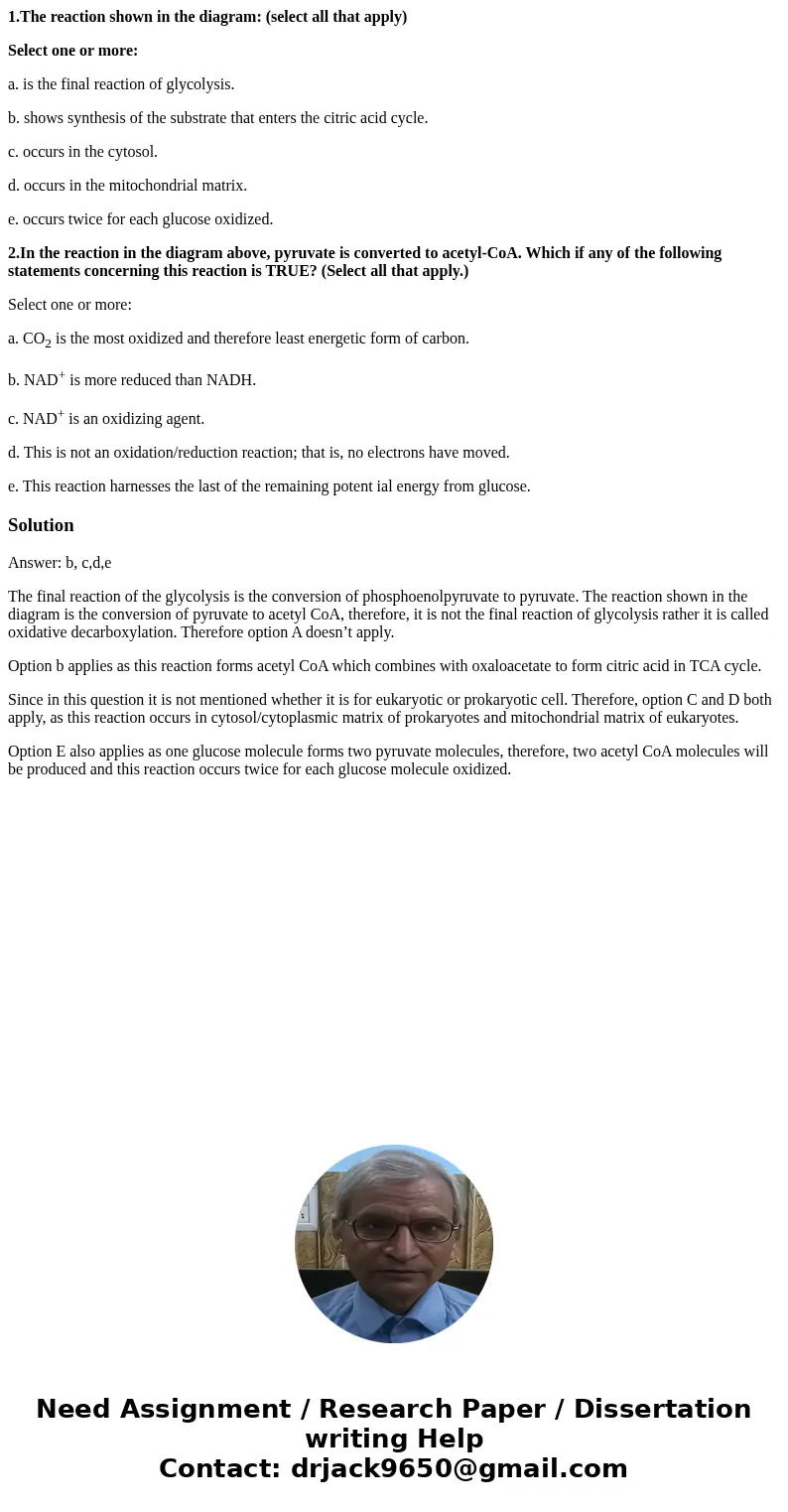1The reaction shown in the diagram select all that apply Sel
1.The reaction shown in the diagram: (select all that apply)
Select one or more:
a. is the final reaction of glycolysis.
b. shows synthesis of the substrate that enters the citric acid cycle.
c. occurs in the cytosol.
d. occurs in the mitochondrial matrix.
e. occurs twice for each glucose oxidized.
2.In the reaction in the diagram above, pyruvate is converted to acetyl-CoA. Which if any of the following statements concerning this reaction is TRUE? (Select all that apply.)
Select one or more:
a. CO2 is the most oxidized and therefore least energetic form of carbon.
b. NAD+ is more reduced than NADH.
c. NAD+ is an oxidizing agent.
d. This is not an oxidation/reduction reaction; that is, no electrons have moved.
e. This reaction harnesses the last of the remaining potent ial energy from glucose.
Solution
Answer: b, c,d,e
The final reaction of the glycolysis is the conversion of phosphoenolpyruvate to pyruvate. The reaction shown in the diagram is the conversion of pyruvate to acetyl CoA, therefore, it is not the final reaction of glycolysis rather it is called oxidative decarboxylation. Therefore option A doesn’t apply.
Option b applies as this reaction forms acetyl CoA which combines with oxaloacetate to form citric acid in TCA cycle.
Since in this question it is not mentioned whether it is for eukaryotic or prokaryotic cell. Therefore, option C and D both apply, as this reaction occurs in cytosol/cytoplasmic matrix of prokaryotes and mitochondrial matrix of eukaryotes.
Option E also applies as one glucose molecule forms two pyruvate molecules, therefore, two acetyl CoA molecules will be produced and this reaction occurs twice for each glucose molecule oxidized.

 Homework Sourse
Homework Sourse